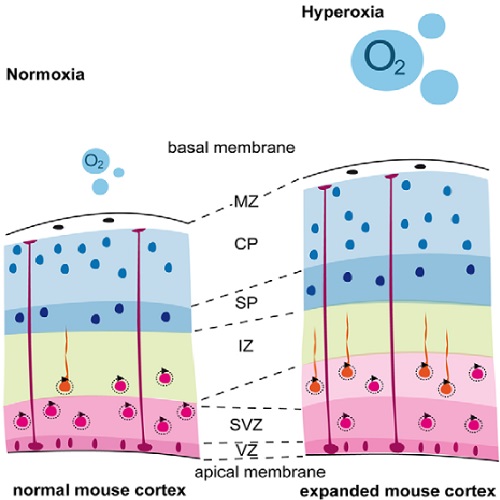Brain oxygen tension controls the expansion of outer subventricular zone-like basal progenitors in the developing mouse brain.
The mammalian neocortex shows a conserved six-layered structure that differs between species in the total number of cortical neurons produced owing to differences in the relative abundance of distinct progenitor populations. Recent studies have identified a new class of proliferative neurogenic cells in the outer subventricular zone (OSVZ) in gyrencephalic species such as primates and ferrets. Lissencephalic brains of mice possess fewer OSVZ-like progenitor cells and these do not constitute a distinct layer. Most in vitro and in vivo studies have shown that oxygen regulates the maintenance, proliferation and differentiation of neural progenitor cells. Here we dissect the effects of fetal brain oxygen tension on neural progenitor cell activity using a novel mouse model that allows oxygen tension to be controlled within the hypoxic microenvironment in the neurogenic niche of the fetal brain in vivo. Indeed, maternal oxygen treatment of 10%, 21% and 75% atmospheric oxygen tension for 48?h translates into robust changes in fetal brain oxygenation. Increased oxygen tension in fetal mouse forebrain in vivo leads to a marked expansion of a distinct proliferative cell population, basal to the SVZ. These cells constitute a novel neurogenic cell layer, similar to the OSVZ, and contribute to corticogenesis by heading for deeper cortical layers as a part of the cortical plate.

- Development 2015 Sep 1;142(17):2904-15
- 2015
- Developmental Biology
- 26329599
- PubMed
Enabled by:
